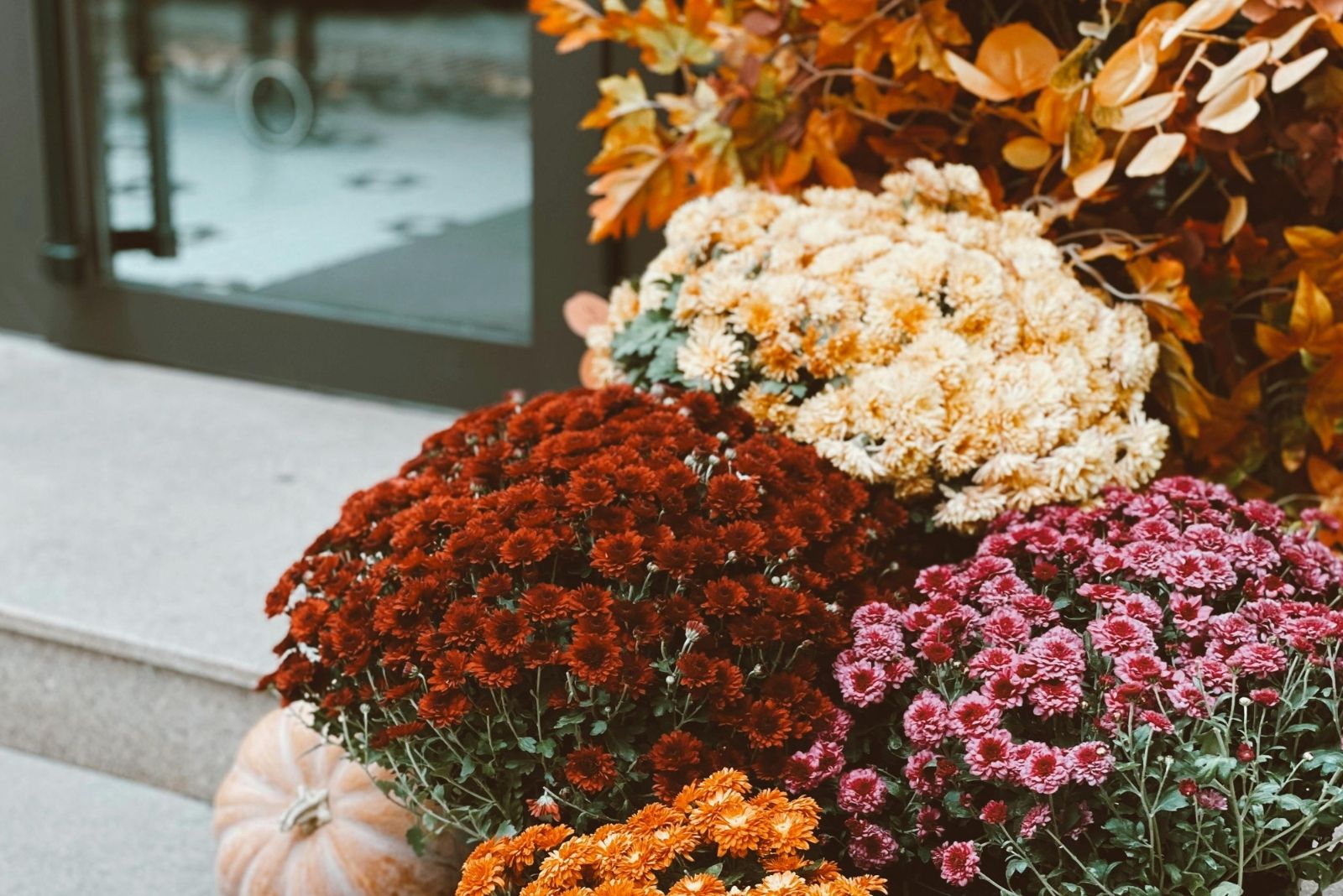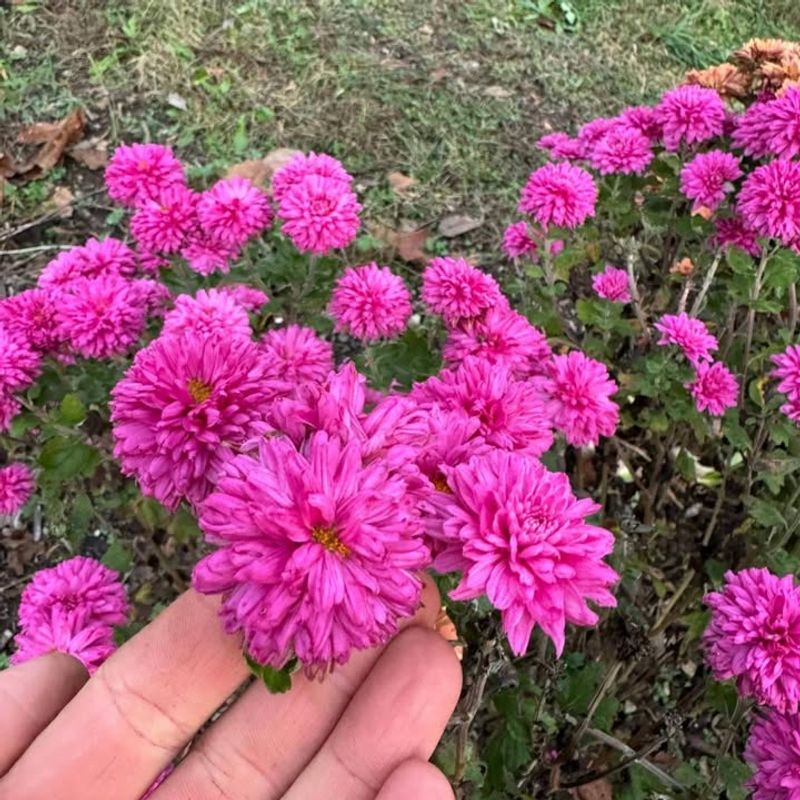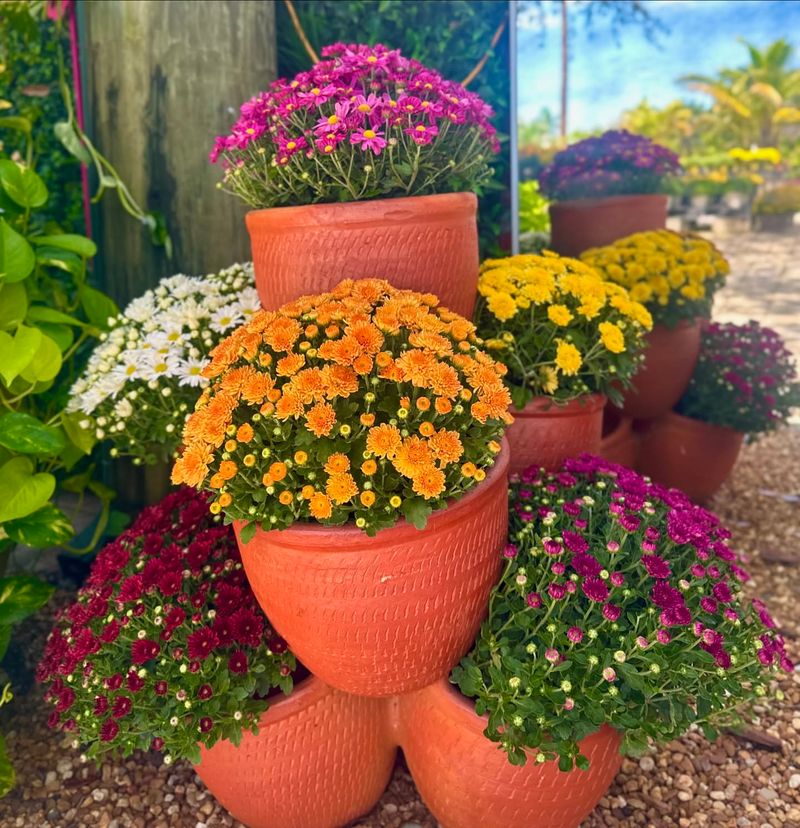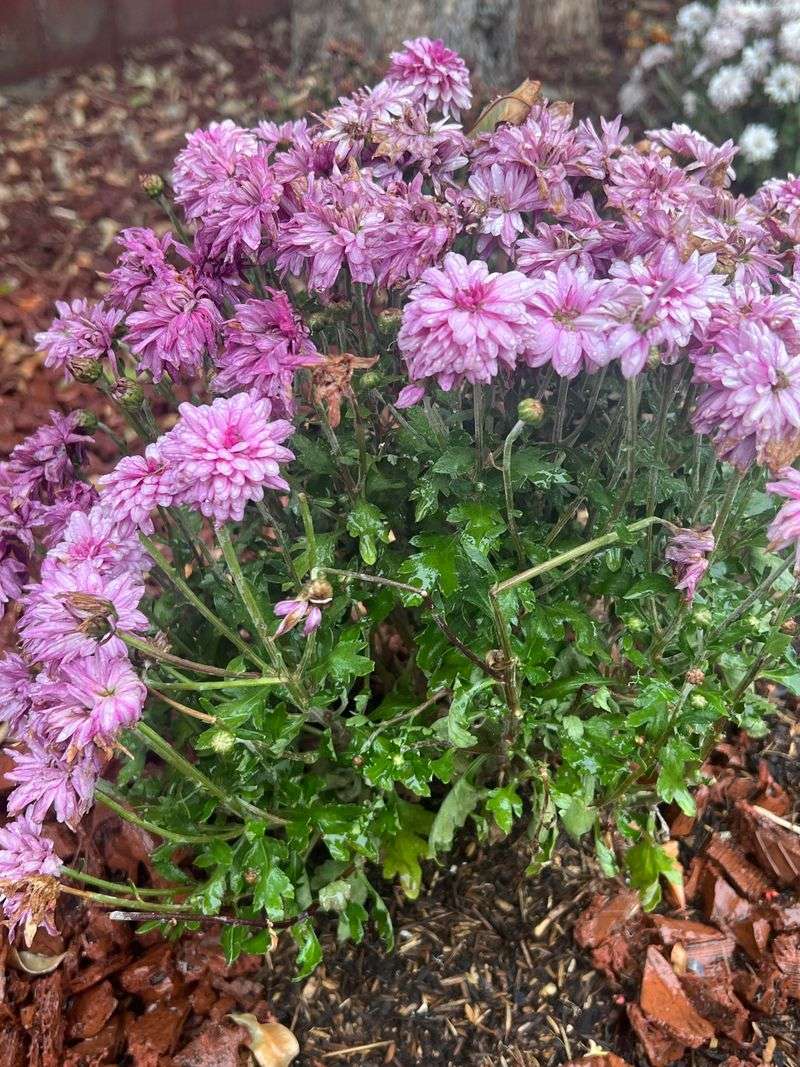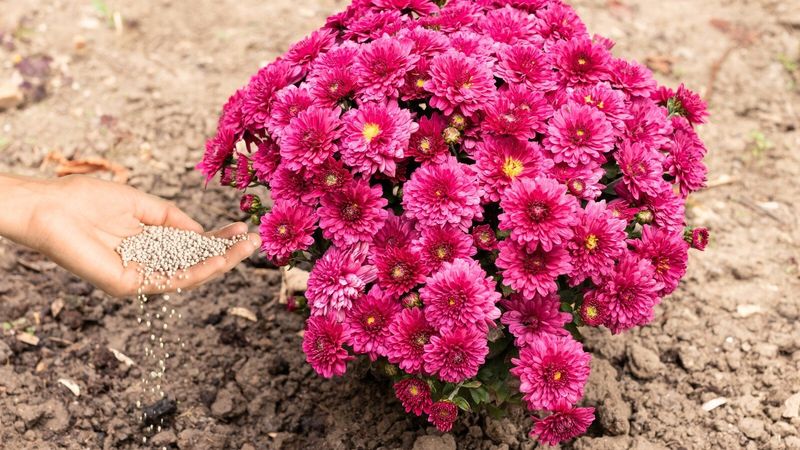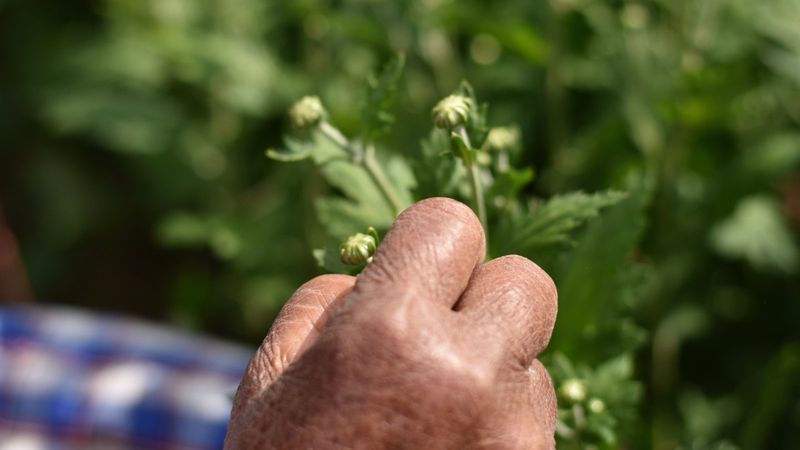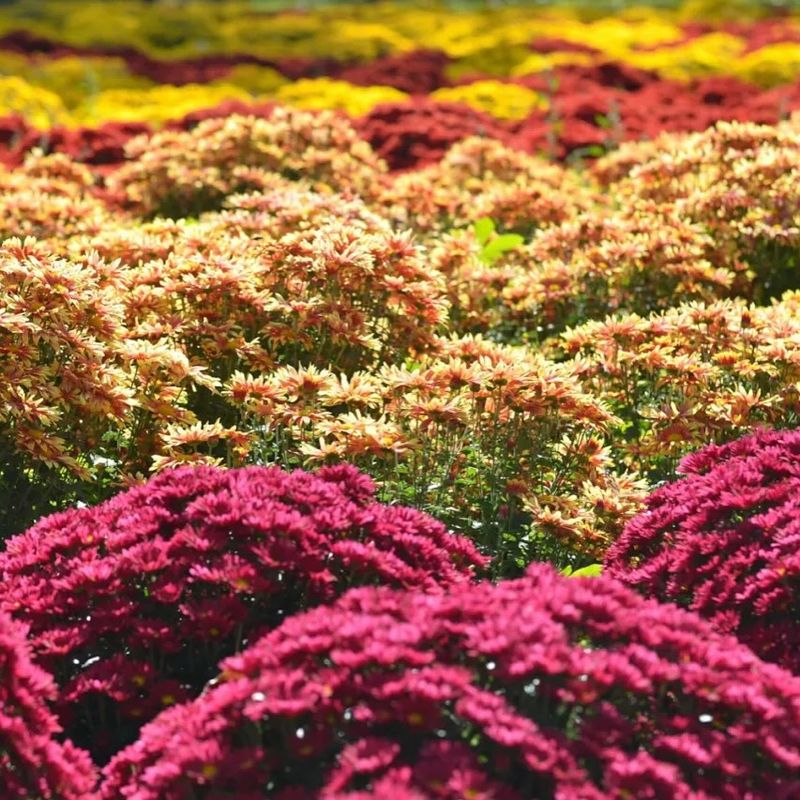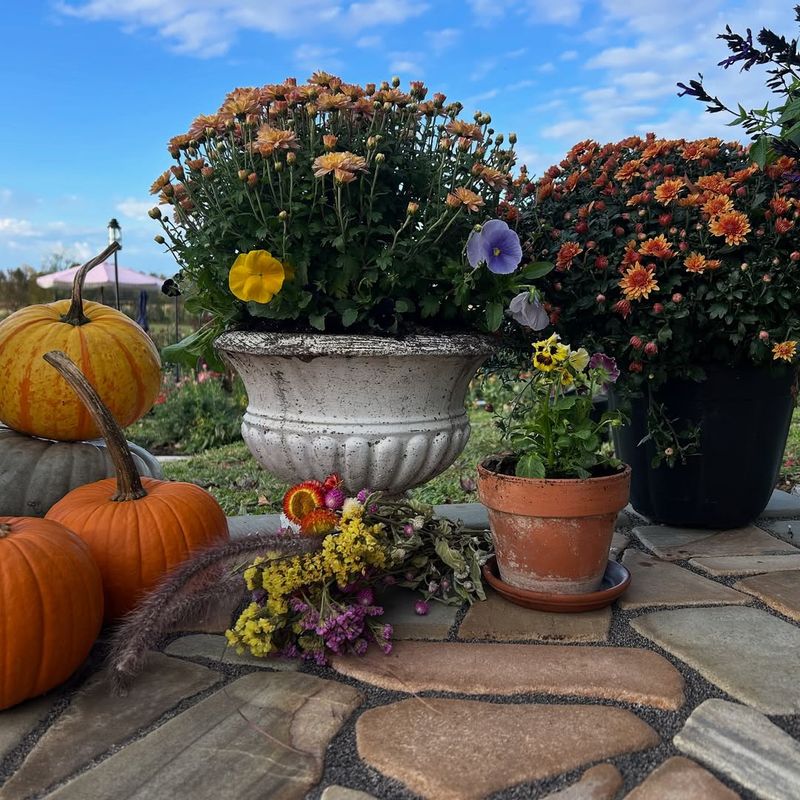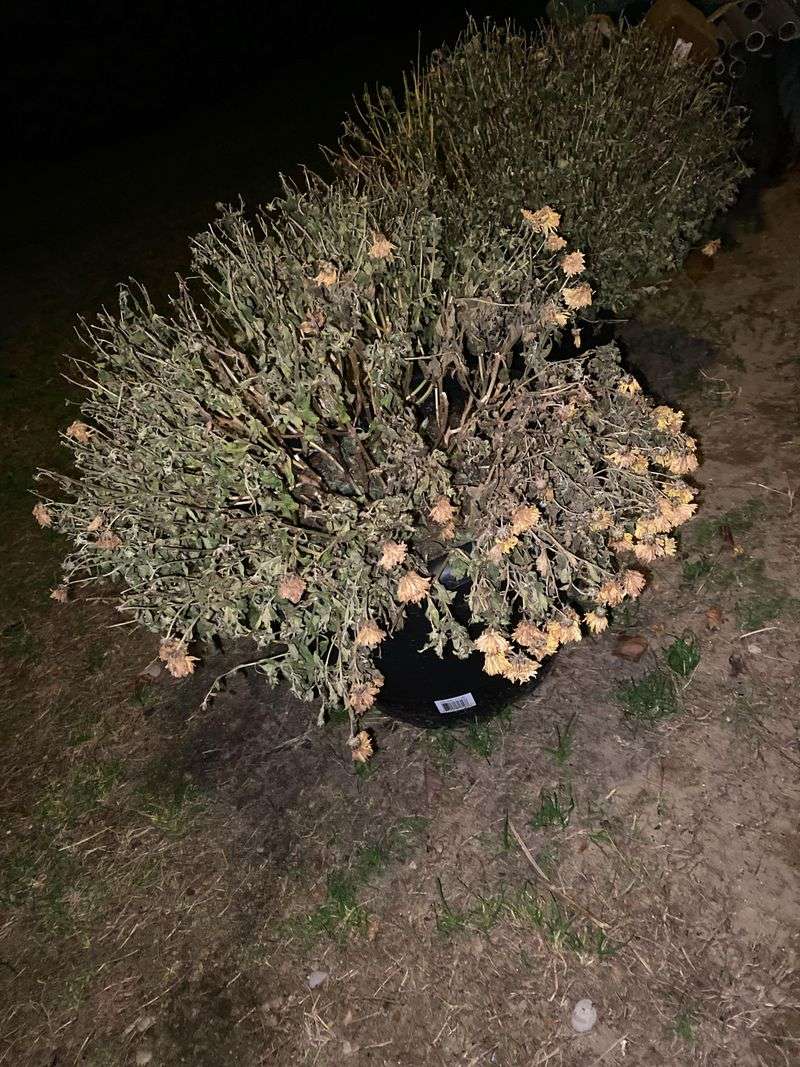Fall in South Carolina brings cooler temperatures and the perfect chance to enjoy colorful mums on porches and in gardens. Many gardeners here love the challenge of keeping these cheerful flowers blooming as long as possible through the season.
With the right care and a few simple tricks, your mums can stay bright and beautiful well into November. In my experience growing mums around the state, I’ve learned that understanding our local climate makes all the difference.
South Carolina’s warm days and cool nights create ideal conditions, but you need to know how to work with the weather. These nine easy methods will help you get the most out of your fall mums this year.
1. Choose The Right Mum Variety For South Carolina Weather
Selecting a variety that thrives in our climate is the first step toward long-lasting blooms. Garden mums bred for outdoor growing handle temperature shifts better than florist types meant for indoor display.
South Carolina’s fall weather can be unpredictable, with warm spells followed by sudden cool nights. Hardy garden varieties adapt more easily to these changes and keep producing flowers longer.
I always look for labels that say “garden hardy” when shopping at local nurseries. These mums have stronger root systems and can handle our humid conditions without wilting or developing diseases as quickly as delicate indoor varieties.
2. Plant in Well-Draining Soil With Plenty Of Sunlight
Good drainage prevents root rot, which is one of the biggest threats to healthy blooms. Clay-heavy soil common in parts of South Carolina can hold too much moisture, so adding compost or sand helps water flow through properly.
Full sun exposure for at least six hours daily keeps plants compact and encourages more buds to form. Shaded mums tend to grow leggy and produce fewer flowers.
For me, mixing in a few inches of organic matter before planting has made a noticeable difference. The improved soil structure allows roots to breathe while still holding enough moisture during our drier fall days.
3. Water Deeply But Avoid Soggy Roots
Proper watering keeps blooms fresh without creating conditions for fungal problems. Deep watering encourages roots to grow downward, making plants more drought-tolerant between watering sessions.
Our South Carolina humidity can trick you into thinking plants need less water, but container mums especially dry out faster than you’d expect. Check soil an inch below the surface before watering again.
I’ve found that watering early in the morning works best, giving foliage time to dry before evening. This simple timing adjustment has helped me avoid mildew issues that used to plague my mums during particularly humid stretches in October.
4. Deadhead Regularly To Encourage New Buds
Removing faded flowers redirects energy into producing fresh blooms instead of seed production. This simple maintenance task takes just a few minutes but extends the flowering period by weeks.
Spent blooms also attract pests and can harbor disease spores in our warm, damp climate. Keeping plants tidy reduces these risks while improving overall appearance.
I make it a habit to deadhead every few days when I water. Pinching off brown flowers between my thumb and forefinger feels satisfying, and I always notice a new flush of color appearing within a week of consistent deadheading.
5. Feed With A Balanced Fertilizer Early In Fall
Fertilizing at the right time gives plants the nutrients they need for continuous blooming. A balanced formula with equal parts nitrogen, phosphorus, and potassium supports both foliage health and flower production.
Early September is ideal in South Carolina since plants are actively growing and setting buds. Fertilizing too late can promote soft growth vulnerable to our occasional early frosts.
I prefer using a slow-release granular fertilizer that feeds plants gradually over several weeks. One application in early fall has been enough to keep my mums producing vibrant blooms throughout the entire season without the need for constant refeeding.
6. Pinch And Prune Wisely For Stronger Growth
Strategic pinching during summer creates bushier plants with more flowering stems. Stopping this practice by mid-July in South Carolina allows enough time for buds to develop before fall arrives.
Removing weak or damaged stems improves air circulation around the plant. Better airflow reduces disease pressure, which matters in our humid climate where fungal issues spread quickly.
I used to skip this step and wondered why my mums looked sparse. Once I started pinching stems back to just above a leaf node every few weeks through June, my plants became fuller and produced twice as many blooms come September.
7. Protect From Early Cold Snaps And Heavy Rain
Unexpected cold fronts can damage tender blooms and slow down flower production. Covering plants with lightweight fabric on chilly nights preserves existing flowers and protects developing buds.
Heavy autumn rains can flatten blooms and spread disease. Moving container mums under an overhang during storms keeps flowers looking fresh longer.
I keep frost cloth handy starting in late October when South Carolina weather becomes less predictable. Taking five minutes to drape my mums before a cold night has saved countless blooms that would otherwise have turned brown by morning.
8. Combine Mums With Other Supportive Fall Plants
Companion planting creates a more attractive display while providing practical benefits. Taller plants can offer afternoon shade during warm South Carolina September days, preventing heat stress on mums.
Ornamental kale, pansies, and asters share similar care requirements and bloom alongside mums. This combination extends visual interest throughout the season as different plants peak at different times.
I’ve noticed that grouping mums with other fall favorites makes my garden feel more intentional and complete. The varied textures and heights create depth, and caring for everything at once streamlines my gardening routine during busy autumn weekends.
9. Overwinter Mums For Another Season Of Color
Treating mums as perennials rather than annuals saves money and creates stronger plants over time. Planting them in the ground by mid-fall gives roots time to establish before winter.
South Carolina’s mild winters make overwintering easier than in northern states. A layer of mulch protects crowns from occasional hard freezes while allowing plants to go dormant naturally.
I started overwintering my mums three years ago and now have clumps that return fuller each season. Watching them emerge in spring and grow throughout summer before blooming again in fall feels rewarding and makes the extra effort worthwhile.

